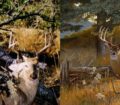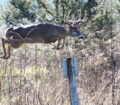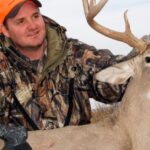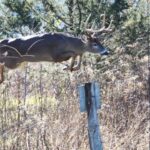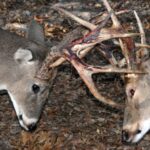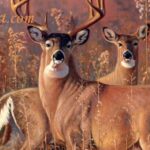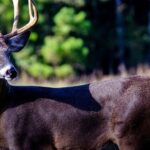Editor’s Note: Chris Kirby, owner of Quaker Boy Inc., bought his family’s business that was started in 1974 by his dad Dick Kirby, one of the legends in the calling industry. Dick Kirby was a very-versatile game caller, and Chris has followed in his footsteps, winning all the major turkey-calling championships after his dad won the World Champion of Champions, the World’s Goose Calling Championship, the World’s Moose Calling Championship, and others. Many outdoorsmen believe Chris Kirby was born with a turkey call and a deer call in his mouth because he can’t remember when he wasn’t calling critters. I’ve asked Kirby to tell us what he says to deer from the beginning of bow season until the end of rifle season to give you ideas for next year’s deer season. One of the best ways to learn a new technique or try a new product is to use it after deer season. If you’ve never attempted to call deer, leave your bow or gun at home, take some deer calls into the woods, and see what happens. Chris Kirby believes that if you’re a deer hunter, you’re a deer hunter all year.
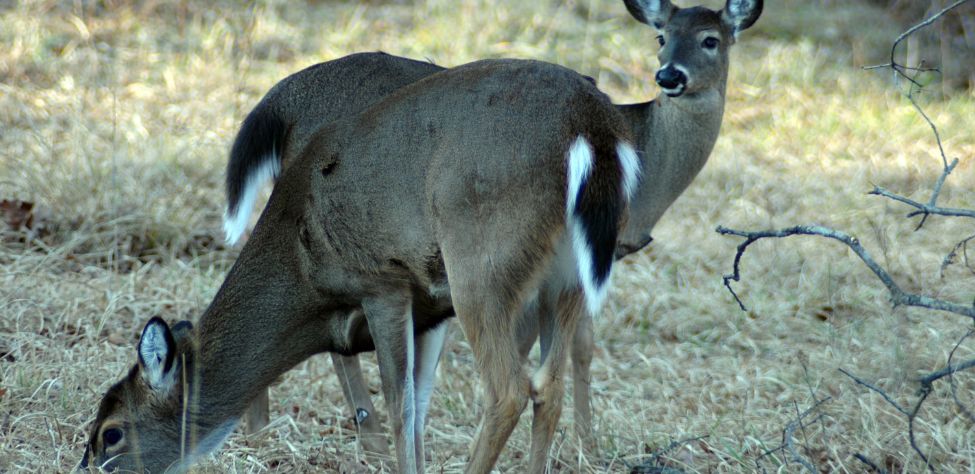
John E. Phillips: Chris, most biologists agree that to keep deer herds in balance, some must be harvested yearly. They also suggest that if you harvest the does during the early part of bow season, there is much more food available for the deer herd on the property you hunt later in the season. What do you call the do you want to take in early bow season?
Chris Kirby: During early bow season, the weather is usually a little bit warmer, and in many areas of the South, temperatures may still be in the 80-100 degree range. Also, generally, some agricultural crops haven’t been harvested yet. The deer know they must start building up fat for the winter and storing energy for the rut.
So, I concentrate my hunting on food sources that are agricultural, soft mast, and early-dropping acorns. If you don’t have any really good food sources, you may start looking for trails leading into thick-cover bedding areas where the deer may bed in the shade to dodge the day’s heat.
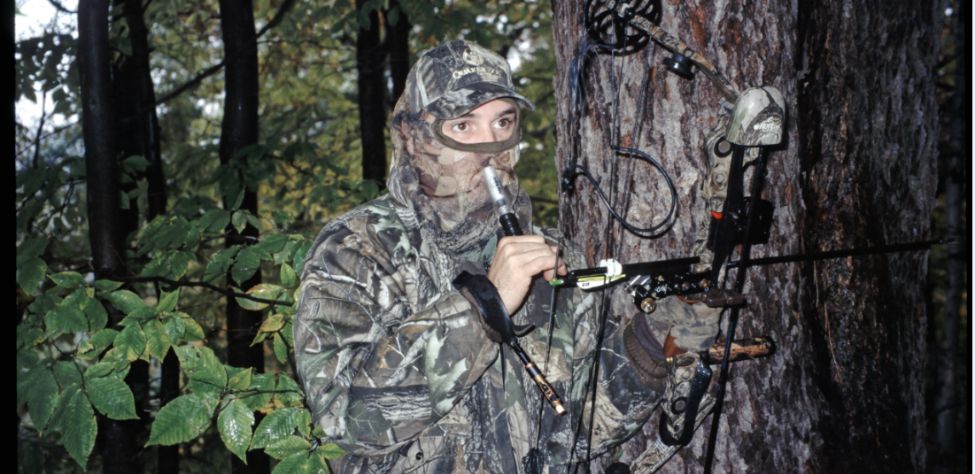
Also, if you’re hunting in an area like Texas or some of the states in the Deep South where droughts often occur, look for deer signs and trails leading to water. Also, search for edges where two types of terrain edges come together. For instance, in New York, where I live, we have quite a few hardwood forests with thick hemlock trees on their edges. Finding thick cover within large timber stands is another place to look for well-worn deer-travel trails.
One of the best calls I know to call in in the early season is our Bleat-in-Heat. This is a call where all you do is turn the call over, and it makes a bleat. We were the first call company to come out with a bleat call back in the 1980s, and we’ve been taking deer with this call ever since it was created. The Bleat-in-Heat is a deep, robust call that sounds more like an older doe. Deers like to be in herds, so when they hear those sounds, they’ll often run to see this new doe in their area. The Bleat-in-Heat II is a quieter call that sounds more like a fawn in distress and is higher-pitched than the Bleat-in-Heat.

Another reason deer will come to this call is for protection; the more deer in a group, the more eyes that group of deer has to look for predators. Another reason that will come to this call is that it sounds like a mature doe who’s upset because her fawn is in distress. This call can and will call in bucks also, but at the very beginning of bow season, it’s generally more effective at calling in does.
Looking for more content? Check out our YouTube channel and watch “Avoid Overhunting a Spot – Bob Sheppard” by John E. Phillips.

How to Hunt and Take Big Buck Deer on Small Properties
In this book, you’ll hear from 14 hunters who either have gained permission or leased properties as small as six acres to as much as 250 acres, and how they consistently take older-age-class bucks off these little lands.
VERSIONS: AUDIBLE, KINDLE & PRINT

Jim Crumley’s Secrets of Bowhunting Deer
Using a black magic marker and a gray work jumpsuit, Jim Crumley of Buchanan, Virginia, drastically changed the nature and purpose of hunting camouflage when he created the first sportsman’s camouflage – Trebark. Crumley’s love of bowhunting and his desire to be more invisible changed hunting clothing forever.
In this hunting guide, he shares the wisdom that he’s learned throughout his lifetime about how to be a hunter, how to find a deer lease, how to scout for deer, and more.
Special features include how to:
- Have a magic 60 acres to hunt
- Decide the best equipment to use
- Find deer year-round
- Locate land to hunt
- Know the best place to put your tree stand
- Get bucks within bow range
VERSIONS: AUDIBLE, KINDLE & PRINT

How to Hunt Deer Like a Pro
How do you know if the land you hunt has a trophy deer on it? Wildlife manager Bob Zaiglin, of Uvalde, Texas and Jim Crumley, the father of modern-day hunting camouflage, tells you how to find out. GPS can make finding and taking that trophy buck easier. This hunting guide will teach you how to hunt big bucks where no one else can find them, how to call deer, and how to become versatile as a deer hunter, so that if one deer tactic doesn’t work, another one will.
In the chapter, “How to find Bucks at Scrape,” Dr. Keith Causey, retired professor of Wildlife Science at Auburn University, describes the best way to hunt a scrape.
Brad Harrison of Neosho, Missouri, is a nationally-known videographer, professional deer hunter and master at calling deer. Another master is Will Primos of Primos Game Calls. These two experts will tell the best deer calls and when to use them in this book.
And for over 20 years, Bo Pitman, lodge manager of White Oak Plantation, has been studying deer movement patterns. He explains what types of conditions are best for predicting deer movement.
VERSIONS: AUDIBLE, KINDLE & PRINT

Deer hunting and deer hunters are drastically changing each year. To learn new techniques for hunting deer and have more places to hunt, I’ve interviewed some of the best deer hunters in the nation and share their tactics in How to Hunt Deer Like a Pro: Volume II.
In Chapter 10, Jacob Lamar tells you his tactics for consistently taking older-age-class bucks on public lands in several states. Chapter 11, Bob Walker explains how to find places on public lands where you can hunt that 99 percent of the other hunters never have considered hunting. The Bonus Chapter with David Ramey tells you how, where, when and with what equipment to take big Kansas bucks on public lands by hunting in 100-degree weather when others won’t hunt.
Chapter 13, Mark Drury, his family and his guests take mature bucks every season by having more small places to hunt rather than one large property. Drury explains the strategy of having satellite farms to hunt that only may be 50-150 acres each or less. Chapter 15, Pat Reeve, who hunts far-northern states and Canada, says, “I don’t like hunting for mature bucks until the weather is 20 degrees or less.” Chapter 4, Dr. Larry Marchinton says that funnels are the most-reliable stand sites to hunt for big bucks and tells why.
VERSIONS: AUDIBLE & PRINT
Tomorrow: Call Buck Deer in the Early Season

